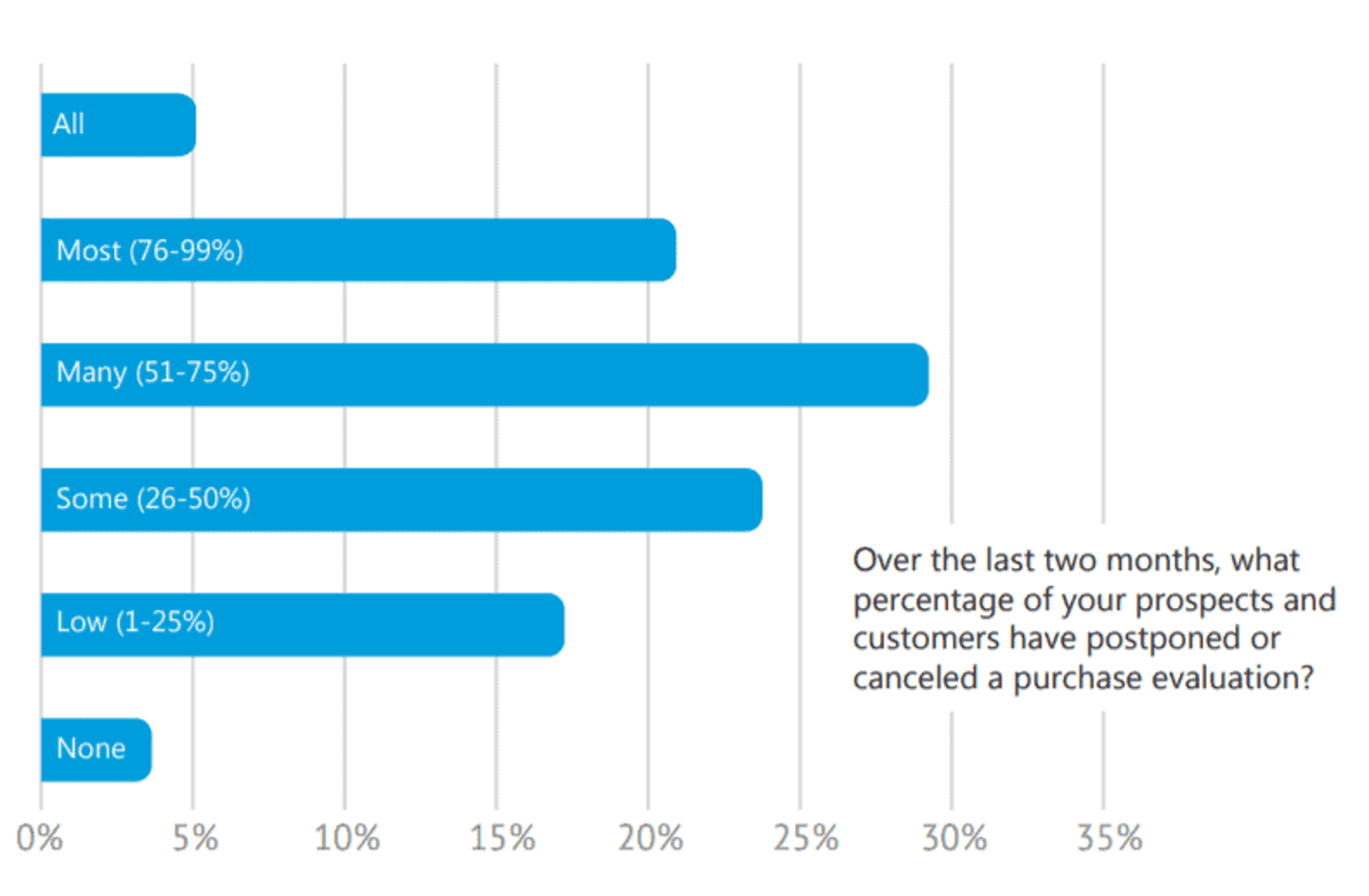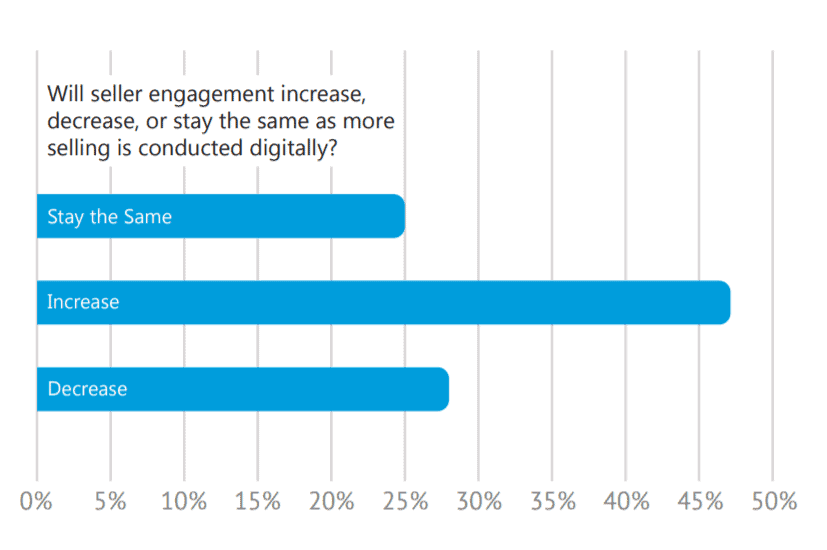How Selling Has Changed in 2020
Outbound sales

At Richardson Sales Performance and Sales Performance International, we had an opportunity to ask hundreds of sales professionals about the recent changes they have seen in the marketplace.
Their responses are a clear sign that the state of selling has changed significantly. Respondents indicated that customer purchase evaluations have changed as perceptions of risk continue to fluctuate. Sales professionals also noted an increase in customer engagement as more selling is conducted digitally. We also learned that many sales professionals are revising their approach to the new circumstances of today by becoming more empathetic.
Here, we look at how recent months have precipitated changes to the selling industry. We review our recent findings to understand how these circumstances have prompted new challenges and how forward-thinking sales professionals are responding with an approach that addresses emerging customer needs.
The State of Customer Purchase Evaluations
The perception of risk among customers has increased. In fact, the perception of risk now pervades every phase in the purchase evaluation cycle. The result: most customers have halted all purchasing activity as they change their priorities.
The data shows that 80% of our respondents indicated that at least some of their prospects or customers have delayed or canceled purchase decisions as a result of the pandemic.

For most, the new priority is to preserve liquidity. Customers understand that if they are able to maintain their assets, they will be better suited to outlast the current economic crisis. Customer strategies and initiatives are changing to accommodate this new strategy.
To gain further clarity on the customer’s perspective, we asked sales professionals, “What worries your prospects and customers most about the pandemic?” Many respondents indicated that their customers are concerned about budget cuts, the timeline of the pandemic, job security, diminishing demand, supply chain disruptions, reduced cash flow, employee safety, and the ability to resume business fast as conditions improve.
We also asked sales professionals what they have done in the last two months to adapt their sales efforts to this challenge? We heard that many are:
- Engaging in remote selling
- Asking customers about priorities, not just projects
- Seeking ways to go above and beyond with customers
- Demonstrating empathy rather than jumping straight to selling
- Finding new and unconventional ways to help
- Increasing their engagement with customers to align more with their situation
- Adjusting messaging to show how they can be of value to the customer’s situation

Virtual Instructor Led Workshops (VILT)
Discover the ways VILT - virtual instructor-led training sales training delivery replicates the experience & impact of live training.
Learn MoreThe State of Sales Engagement
We asked sales professionals if they believe seller engagement will increase, decrease, or stay the same as more selling is conducted digitally. The responses show that 47% of sales professionals in the survey believe that engagement will increase.

The remaining respondents are somewhat divided, with 28% indicating that they believe engagement will decrease and 25% telling us that they believe it will stay the same. This finding underscores the need for sales professionals to provide higher-level insights about the value customers can expect to receive.
That is, as seller engagement increases, sales professionals must become even more effective in delivering value in the conversation so that these frequent interactions are worthwhile for customers. While many customers do conduct initial solution research online, they often rely on sales professional conversations to validate their findings.
Delivering impactful insights means exceeding anything the customer might find during their own research. Put simply: customers are expecting a higher level of interaction. It is important for sales professionals to remember that offering a meaningful insight does not always need to lead directly to a sale. Many customers will be far more receptive to an empathetic approach during a period of economic difficulty.
Increased engagement is more than an avenue to near-term revenue — it is also a way to maintain the fragile relationship with customers. Increased engagement is also a way for sales professionals to maintain the momentum of opportunities that were progressing through the pipeline prior to the pandemic. With increased customer contact, sales professionals can accelerate the progress of legal agreements, pricing options and approvals, and financing. This approach will leave sales organizations well positioned when the global economy begins to thaw and competitive forces surge. Some of the most effective teams are embracing this forward thinking plan by making the choice to:
- Exhibit a calm voice of reason and confidence
- Remain in contact with prospects and customers and conveying positive messaging
- Share useful analysis of trends and developments regarding the pandemic
- Offer examples of customers who are moving forward with buying decisions
- Demonstrate situational fluency wherever possible
The unprecedented circumstances of today are a rare opportunity for sales professionals to demonstrate their unwavering guidance, insight, and resolve to customers burdened by uncertainty. Doing so means getting proactive about gaining new clarity on the customer’s changed needs and using that information to offer high-level insights unavailable elsewhere.
The start and duration of the recovery remain unclear. This uncertainty should not faze sales professionals because no matter how it unfolds, customers will always need the calming presence of a thoughtful professional.

Virtual Selling Training Program Brochure
Learn how our training helps teams more effectively engage customers through digital channels.
DownloadGet industry insights and stay up to date, subscribe to our newsletter.
Joining our community gives you access to weekly thought leadership to help guide your planning for a training initiative, inform your sales strategy, and most importantly, improve your team's performance.






